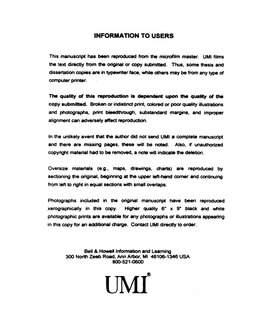| dc.contributor.advisor | Badiru, Adedeji B., | en_US |
| dc.contributor.author | Milatovic, Milan. | en_US |
| dc.date.accessioned | 2013-08-16T12:30:54Z | |
| dc.date.available | 2013-08-16T12:30:54Z | |
| dc.date.issued | 2000 | en_US |
| dc.identifier.uri | https://hdl.handle.net/11244/5964 | |
| dc.description.abstract | Globalization of business activities, deregulation of industries, and technological advances have greatly contributed to the increasing importance of project scheduling approaches in knowledge rich economy. In this new economy, multifunctional capabilities are becoming one of the most critical resource attributes that need effective appropriation in resource constrained scheduling. As a result, the traditional scheduling of project activities must be complemented with attentive mapping of human, social and technical resources to interact in value creating ways, while still meeting the cutting edge of both analytical rigor and managerial relevance. Therefore, the primary objective of this research is the development of a generic project scheduling model that incorporates (1) resource characteristics, such as preferences, time-effective capabilities, costs and availability of project resources, (2) possible performance interdependencies among different resource groups, and proceeds to map the most relevant resource units to each newly scheduled project activity. The principal challenge in this generic model development is to make it applicable to realistic project environments which often involve resource units with characteristics which may vary across activities, as well as within a single activity relative to specific interactions among resources. The scope of this research challenge increases when the actual duration, cost, and successful completion of a project activity are considered to be potentially resource driven and dependent on the choice of particular resource units assigned to it. Such successive consideration of resource characteristics in resource allocation to activities is of extreme practical relevance because it may likely also improve overall project duration, quality, and cost. | en_US |
| dc.description.abstract | The model developed in this study first schedules qualifying activities at each decision instance, and then dynamically maps available and the most relevant resource units to them. Before the resource-activity mapping occurs, resource units are classified into groups based on their interactive dependencies. Those units, whose preferences or performance on an activity depend on their interaction with units from other groups, are mapped last. The actual mapping of resource units to activities is accomplished according to a pre-specified arbitrary utility function which incorporates one or more of the above resource characteristics. Due to the dynamic nature of project schedules, the utility function may be held fixed throughout the mapping or be allowed to vary with time by filtering out some of its additive components not associated with current scheduling time. Similarly, the utility may be allowed to differ for different resource groups by filtering out its components not associated with currently mapped resource group. The procedure progresses until all project activities are scheduled and resource units assigned to each of them. This model represents a crucial initial step towards a comprehensive resource-activity based integration in project scheduling, which is a particularly valuable managerial tool in knowledge-intensive industries. | en_US |
| dc.format.extent | xi, 234 leaves : | en_US |
| dc.subject | Critical path analysis. | en_US |
| dc.subject | Engineering, Industrial. | en_US |
| dc.subject | Production scheduling. | en_US |
| dc.subject | Business Administration, Management. | en_US |
| dc.subject | PERT (Network analysis) | en_US |
| dc.title | Mapping of multicapable and interdependent resource units in PERT/CPM networks. | en_US |
| dc.type | Thesis | en_US |
| dc.thesis.degree | Ph.D. | en_US |
| dc.thesis.degreeDiscipline | School of Industrial and Systems Engineering | en_US |
| dc.note | Source: Dissertation Abstracts International, Volume: 61-04, Section: B, page: 2138. | en_US |
| dc.note | Chair: Adedeji B. Badiru. | en_US |
| ou.identifier | (UMI)AAI9968101 | en_US |
| ou.group | College of Engineering::School of Industrial and Systems Engineering | |
